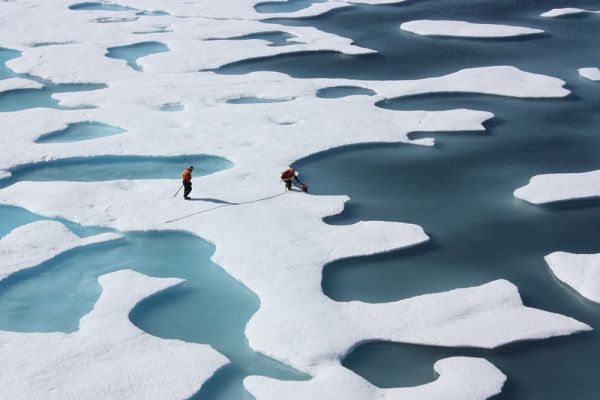Over the past two decades, the Arctic has lost about one-third of its winter sea ice volume, largely due to a decline in sea ice that persists over several years, called multiyear ice, according to a new study. The study also found sea ice is likely thinner than previous estimates.
Seasonal sea ice, which melts completely each summer rather than accumulating over years, is replacing thicker, multiyear ice and driving sea ice thinning trends, according to the new research.
Arctic sea ice snow depth is estimated, for the first time, from a combination of lidar (ICESat-2) and radar (CryoSat-2) data. Using these estimates of snow depth and the height of sea ice exposed above water, the study found multiyear Arctic sea ice has lost 16% of its winter volume, or approximately half a meter (about 1.5 feet) of thickness, in the three years since the launch of ICESat-2.
The study was published in the AGU journal Geophysical Research Letters, which publishes short-format, high-impact papers with implications that span the Earth and space sciences.
Read more at American Geophysical Union
Image: New estimates of snow depth, from a combination of lidar and radar, improve sea-ice thickness estimates, according to a new study in AGU’s Geophysical Research Letters. Arctic sea ice has lost 16% of its thickness in the last three years, the study finds. (Credit: NASA/Kathryn Hansen)


